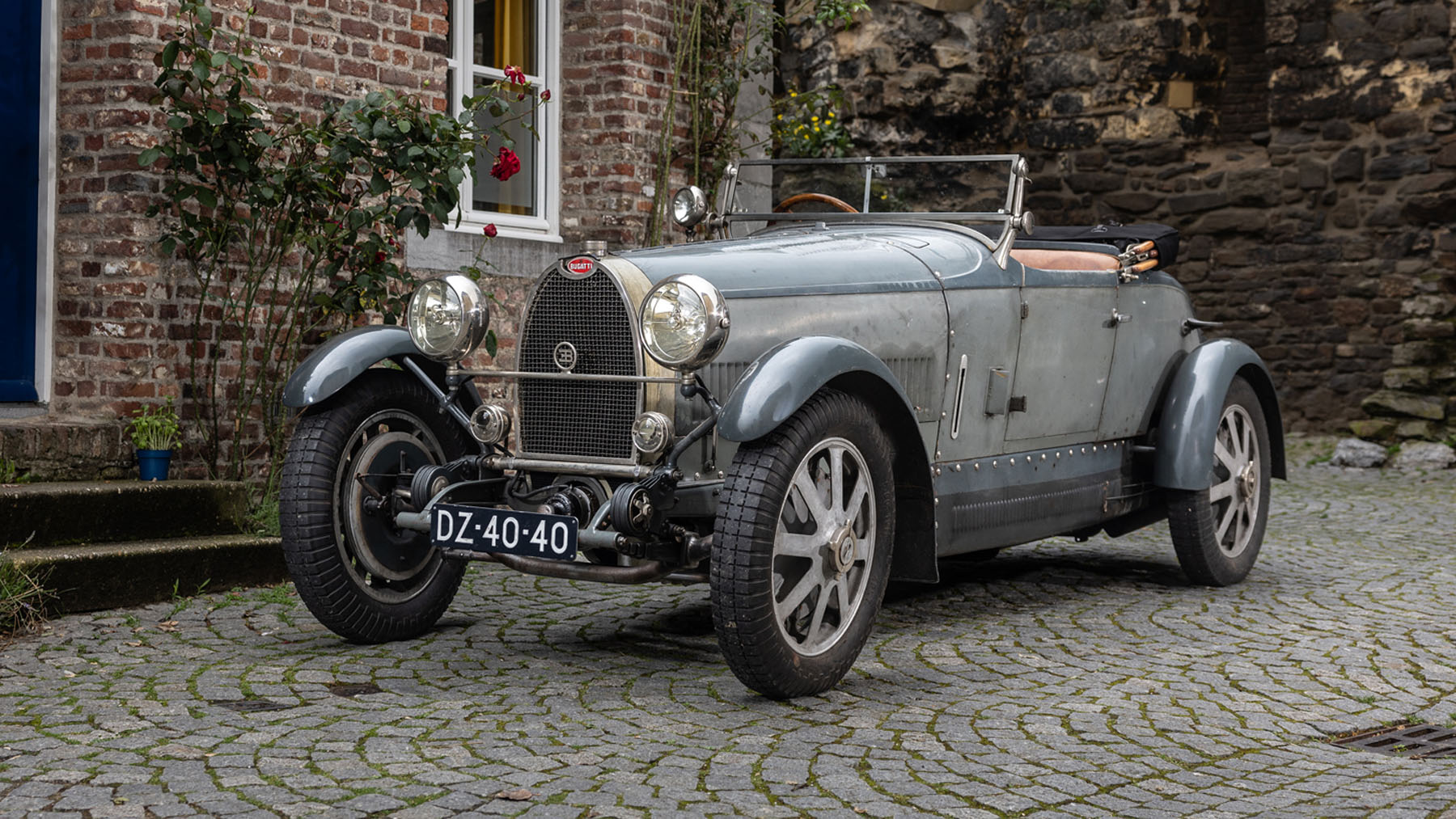Background
The Bugatti factory in 1927 was at the peak of its automobile production with multiple lines to handle the demand for the various Type 35 Grand Prix models; the blown and unblown Type 37 Sports and GP models; the Type 38, Type 38A, Type 40 and 40A touring cars, as well as the Type 43 Grand Sport and, later in the year, the Type 44. It also followed the year in which Bugatti began to manufacture their own sports-touring bodies, initially for the four-cylinder Type 40 Grand Sport followed by the Type 43 Grand Sport; before this point, completed chassis were delivered to any one of many domestic or foreign coachbuilders in or near Western Europe.
The introduction of the Bugatti Type 43 Grand Sport, however, created a sensation as it was the first true sports car with a genuine 100 mph capability, coupling a slightly detuned Type 35B 2.3-liter supercharged Grand Prix engine with a shortened and “waisted” T38 touring chassis frame contoured to the shape of the standard Grand Sport coachwork. Ettore Bugatti had created one of his masterpieces; indeed, the noted author and marque specialist, the late H.G. Conway said of the T43 over 60 years ago that “it was the model to be aspired to in the 1927–1932 period as a Ferrari may be today, as a road car with the qualities of its racing sister.”
No Subscription? You’re missing out
Get immediate ad-free access to all our premium content.
Get Started



